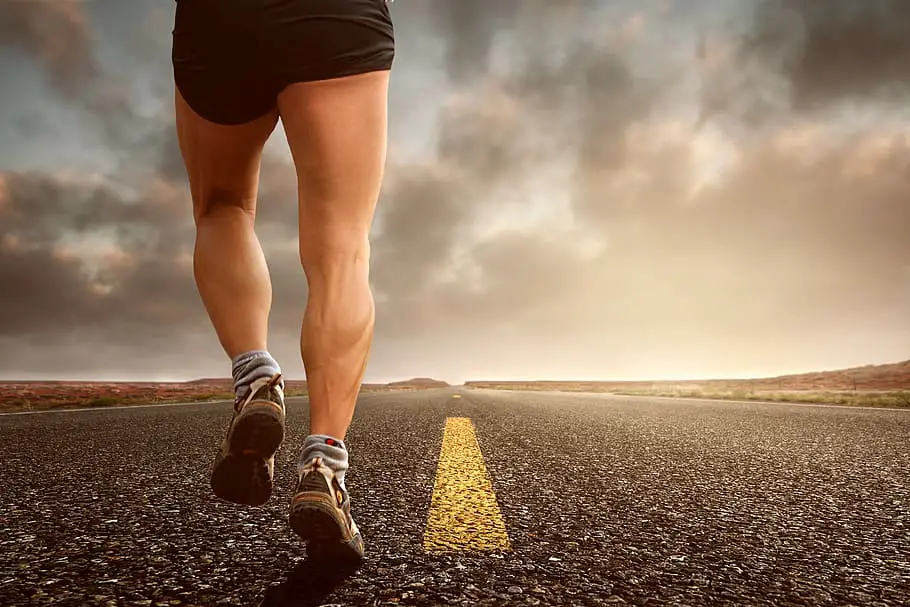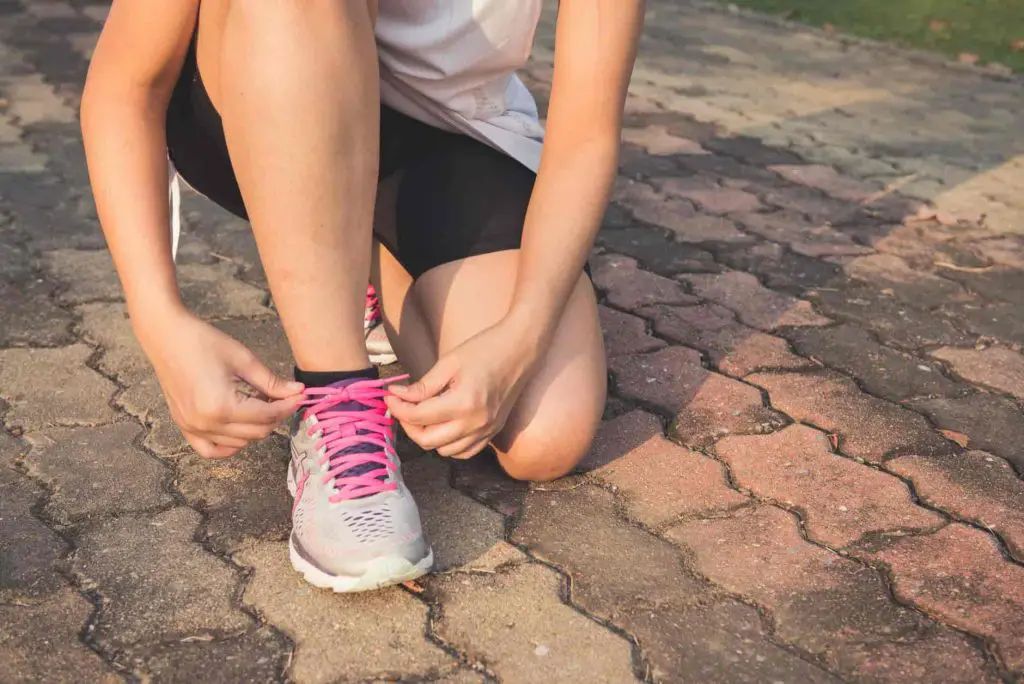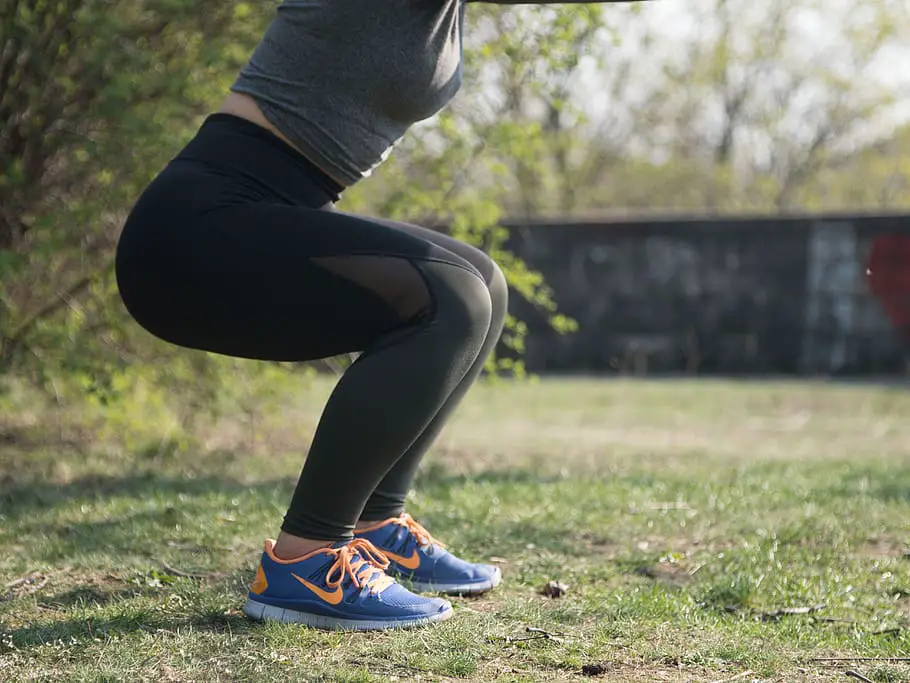If you are looking for a way to exercise your body without going to a gym or lifting weights?
Here is one of the best options that you can do from the comfort of your home.
Hindu squats, a remarkably effective compound-exercise that doesn’t require equipment or much space to perform.
This technique, also known as tiger squats or bethaks, has its origin in ancient India.
It became popular because it was the form of training used by the practitioners of traditional Indian wrestling.
It generates high resistance in the legs and cardiovascular system of these athletes.
Below, you will find the elemental information to practice this exercise.
Also, you’ll learn the advantages that it has for your body, the way it impacts on different muscles, and how you may complement it.
How do you do Hindu squats?
Before describing the way to perform Hindu squats, we want to emphasize that you should never forget that the first steps to perform any exercise are stretching and warming up.
Without them, we should not start any sports practice or training.
In this way, we considerably reduce the possibility of suffering an injury during physical activity.
Another interesting fact is that this Hindu modality maintains the same principles as the classic squats, but integrates a circular and synchronized arm movement.
Besides, modifies the feet posture, which makes the difference when working more muscles in each repetition.
But, let’s take a step-by-step look at the ideal way to perform these type of squats and how they differ from the better-known ones:
1. First, you must assume the traditional squatting position: standing, looking straight ahead, feet shoulder-width apart and arms extended forward.
2. Then, you inhale as you bend your legs and start to go down as you move your arms back, bend your elbows.
3. When you are down, you should take a short break to raise your heels and stay on your toes (This maneuver, together with the circular movement of your arms, makes the difference with other types of squats and makes you work more muscles at the same time).
4. Finally, you push yourself up sturdily, moving your arms forward again and bending your wrists as you exhale to return to the starting position.
5. Repeat this movement slowly for the number of repetitions you have set in your series.
Take your body to the next level with these hardcore supplements for bulking, cutting and strength.
Which muscles are worked with Hindu squats?

One of the reasons that make this type of training very efficient is that it is a compound exercise.
This means that several muscles work at the same time or during the movement your body makes when performing the Hindus squats.
These are the muscles you work with this exercise:
- Quadriceps.
- Gluteus.
- Psoas muscle.
- Gastrocnemius muscle.
- Soleus.
- Hip extensor muscles.
- Biceps femoris.
- Lumbar muscles.
- Rectus abdominis.
- Oblique abdominals.
- Hamstrings.
- Adductor.
Below you’ll discover which are the most benefited muscles and in which moment of the exercise you work them.
Knowing this always helps to make every move with a greater dedication:
Quadriceps:
You use these muscles when you go down and pause before going up.
Hamstrings:
As with quadriceps, you use them when going down and up again.
Glutes:
You exercise these muscles by squeezing them when going upwards.
Abdomen:
This muscle work as a strong axis of balance during all movements.
Shoulders:
You use and strengthen these muscles when you do your arm movements.
Calves:
You can feel the pressure when you go up and lean on your toes.
Can Anyone Practice Hindu Squats?
You must know how much exercise you should do when you are starting to use this type of training.
It doesn’t matter how few repetitions you manage to do in the first few days or weeks.
The important thing is that you use the technique correctly and that you increase the number of squats you do over time.
Also, increase the time you spend on the squat when you feel it is necessary to progress and get results.
To begin, you can try 3 daily sets of 10 to 15 reps and on the third day, increase the reps to 20 or 30.
It is recommended that you increase the number of squats every two days until you reach the optimal number of 100 repetitions per day.
Do this, only if you feel you can handle this amount and you are not overloading yourself.
Applying a proper technique implies recording how many repetitions you can do in a chosen time.
For example, see how many squats you can do in 15 seconds.
Then, in the next series, you add more repetitions at the same time and so on.
With this one-step-at-a-time tactic, you can really go a long way in the work of your body and your health.
It is also recommended when you are already at a level above 100 repetitions per day, that you dedicate one or two days a week, to do only recovery stretches.
That way, you avoid any possible injuries. Nor should you forget to get enough rest and sleep to have a healthy body.
hindu squats benefits

Practicing Hindu Squats provides meaningful benefits.
Because it’s a multi-muscle exercise, you work your body more intensely and in less time than with other type of workouts.
For example, this practice helps you build muscle.
With this process, you start to burn calories with an immediate impact on your weight, which is usually the reason why most people approach this kind of training.
Another benefit you can have is an increase in your heart rate and an improvement in your cardiovascular endurance.
And, like most exercises of this type, when you master it, it gives you greater coordination and balance of your body.
This exercise can also help you in your psychological well-being because it is proven to help fight stress and promote relaxation in its practitioners.
But, if all you’re looking for is a firmer, better-shaped butt, there’s no reason to be embarrassed!
On the contrary, that’s why we’re talking about Hindu Squats, it’s the one you need! With dedication, you will have amazing results in a short time.
Is There Any Harm In Practicing Hindu Squats?
There is some belief that these type of squats cause injury and aggravate problems such as back or knee pain.
But, the truth is that if you do them accordingly, they help improve your condition and you might even get over it.
People with knee injuries and those who have had ligament or meniscus surgery are advised not to make such demands on themselves.
In these cases, it is better to do squats with less intensity, reducing the number of repetitions and training time.
You can also use a knee brace to soften the impact of this exercise.
If you are suffering from shoulder pain, you must not exercise without warming up.
You should check your range of motion without feeling pain and move your arms to that point.
Similarly, for people suffering from back pain, they must try as far as they can go without feeling pain.
Then they can go down a little more each time until they can complete the full movement, but without rushing or forcing the back.
But, if you already have experience with the Hindu Squats, and you don’t have any injuries, you can make it more demanding by using a weighted vest while you’re doing the squats.
The Hindu Pushups: the counterpart
The Hindu Squats are most effective for the lower body.
But, if you want more integral training that covers your whole body, there is a useful option to complement them, and that also comes from ancient India. We are talking about the Hindu Pushups.
The fitness world also knows this exercise as “Yoga Push-ups” because the postures and movements are similar since both have the same ancient Indian origin.
To practice it, you must be in good shape and also have a lot of strength and flexibility.
1. To do these push-ups, you can start from the traditional push-up posture and go down as you regularly would.
2. But when you go up, you must stretch your back completely by tracing an upward diagonal from the head to the buttocks, which must be fully raised and pointing to the ceiling.
3. The whole of the soles of the hands and feet should touch the floor.
4. Then, you slide your arms and back forward until you return to the classic push-up position to get down on the floor.
5. You go back up, repeating the same movement until you reach the initial posture, as many times as you can.
The Hindu Pushup is also a compound exercise, and the muscles it works are the following:
- Pectoralis major.
- Pectoralis minor.
- Deltoids.
- Trapezius.
- Triceps brachii.
- Wrists.
The importance of the stretching after exercise

It often happens that, after finishing any type of exercise, many people don’t stretch at all, possibly causing injury or aggravating a muscle problem they already have.
Most of the time, this happens because people are unaware of the dangers this represents.
That’s why you must do a series of stretches once you’ve completed your Hindu Squats.
This will prevent the risk of future muscle tears and also helps muscle growth you have just worked on.
Hence, this should be seen as the last step of your training.
Take your body to the next level with these hardcore supplements for bulking, cutting and strength.


